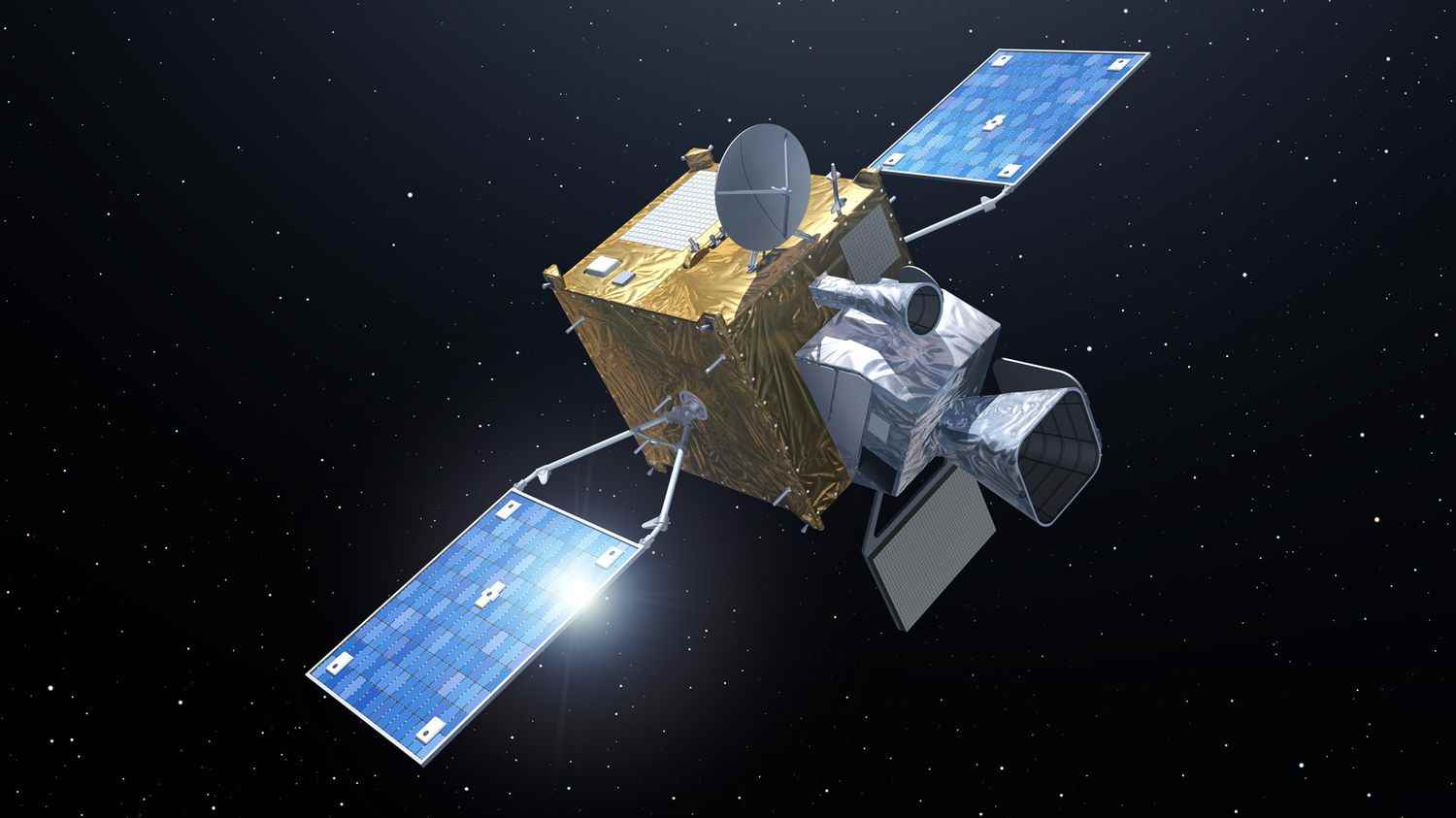The European MTG-I and MTG-S satellites will make it possible to establish weather forecasts almost in real time and to facilitate the work of other users, such as firefighters. First takeoff at the end of 2022 from Kourou.
Article written by
Published
Update
Reading time : 1 min.
For its forecasts, Météo France will have data from a new generation of satellites in the coming months. This third generation, which will replace the two devices currently operational in space, is currently under construction in France. It is in a building of the Thales Alenia Space group in Cannes that the first of these new satellites called MTG (for Meteosat third generation) is being finished.
On board this big four-ton cube equipped with solar panels for its power supply, improved measuring instruments, including a new one. “A new instrument has been mounted called the Lightning Imager, explains Pierre Armand, head of this program at Thales Alenia Space. He is there to detect lightning between the clouds and those that will hit the ground. This meets two objectives: to improve our knowledge of the generation of lightning and to improve the alert to populations.
In all, this new generation will have six satellites: four of the type currently being finished (MTG-I) for imaging and two others, called sounders (MTG-S) and equipped with completely new instruments that will allow repeatedly obtaining other information, in particular on the chemical composition of the atmosphere.
All this should provide a hundred times more data than current satellites. With the first generation of Meteosat satellites, images were refreshed every 30 minutes. This delay has been reduced to 15 minutes with the second generation Constellation, and will drop to just 10 minutes with MTG. What improve the weather maps established daily by forecasters but also facilitate the work of other users such as firefighters.
“The fact that we have images with greater precision will allow us to have products for monitoring forest fires, says Sylvain Le Moal is one of the managers of the Meteo France Space Weather Center (CMS) in Lannion, Brittany. This will allow us to follow the movement of both the hearths and the smoke much more precisely, as well as to measure the temperature of these fires, and therefore know the places where they are most active. In the fall, the first satellite will leave Cannes for Kourou where it will board an Ariane 5 rocket. First take-off scheduled for the end of the year.
